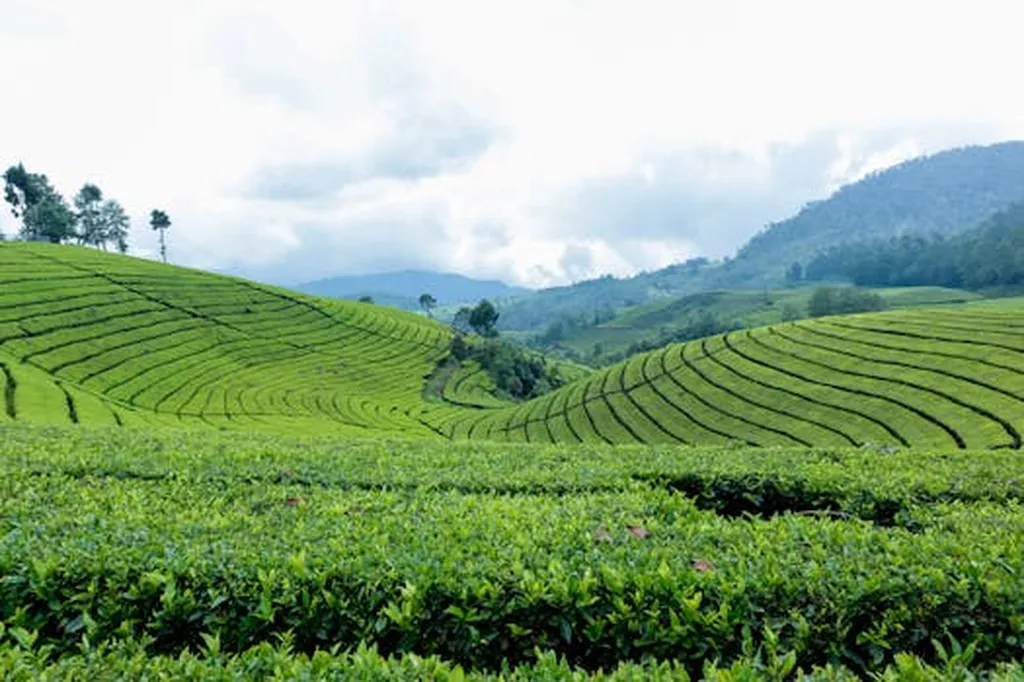In the lush landscapes of Hainan Island, China, tea cultivation has long been a cornerstone of the local economy. However, the looming specter of climate change threatens to disrupt this delicate balance, prompting researchers to seek innovative solutions. A recent study published in ‘Agronomy’ (translated to English as ‘Field Cultivation and Soil Science’) sheds light on the future climatic suitability of tea planting on Hainan Island, offering crucial insights for the agricultural sector.
Led by Qichun Zhu of the Jiangsu Provincial University Key Laboratory of Agricultural and Ecological Meteorology at Nanjing University of Information Science and Technology, the research team delved into the intricate interplay between climate change and tea cultivation. By analyzing daily surface meteorological data from 19 national meteorological observation stations on Hainan Island from 1990 to 2019, the researchers established a spatial analysis model for climate zoning indicators. This model, combined with GIS spatial analysis and fuzzy logic, provided a comprehensive assessment of the island’s climatic suitability for tea production.
The findings reveal a nuanced picture of tea cultivation on Hainan Island. “We found that the most suitable zone for tea planting is centered in the northeastern parts of the island,” Zhu explained. “The suitable zone is mainly distributed in the central mountainous areas and the western coastal region, while the sub-suitable zone includes central and southern parts of Dongfang. The unsuitable zone, characterized by high temperatures and strong sunlight, is primarily in the eastern and southern parts of Dongfang and southern parts of Changjiang.”
The study also projects future climatic scenarios, indicating that temperatures on the island will continue to rise. This shift will cause suitable temperature areas to shrink from the periphery toward the central mountainous regions. Additionally, increased precipitation is expected to expand suitable precipitation areas across the island.
The implications of this research are profound for the agricultural sector, particularly for tea producers and policymakers. Understanding the climatic suitability of tea planting zones enables more informed decision-making, promoting sustainable tea production and the rational utilization of agricultural climate resources. As Zhu noted, “This approach helps refine zoning for tea planting areas and assess potential future climate changes, ultimately supporting the long-term viability of tea cultivation on Hainan Island.”
The commercial impacts of this research are significant. Tea producers can use these findings to optimize their planting strategies, ensuring higher yields and better quality. Policymakers can leverage this information to develop targeted interventions that mitigate the adverse effects of climate change on tea cultivation. Furthermore, the integration of GIS and fuzzy logic in climate zoning offers a scalable model that can be applied to other agricultural sectors, enhancing resilience and sustainability.
As the world grapples with the challenges of climate change, studies like this one provide a beacon of hope. By harnessing the power of technology and data-driven analysis, researchers are paving the way for a more sustainable and resilient future in agriculture. The insights gleaned from this research not only shape the future of tea production on Hainan Island but also offer a blueprint for other regions facing similar climatic challenges. In an era of uncertainty, such innovative approaches are invaluable, ensuring that the agricultural sector remains robust and adaptable in the face of change.

